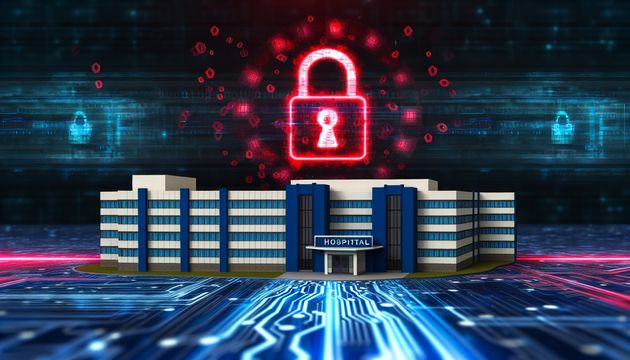
The 2023 Ransomware Attack on Johnson Controls: A Case Study in Cybersecurity Challenges
The 2023 ransomware attack on Johnson Controls serves as a stark reminder of the vulnerabilities that even large corporations face in the digital age. This breach, initiated through a security lapse in the company’s Asian offices, allowed the Dark Angels ransomware group to infiltrate and disrupt operations on a global scale. By exploiting weaknesses in regional systems, the attackers managed to encrypt critical infrastructure, leading to significant operational and financial repercussions (BleepingComputer). The attack not only highlighted the sophistication of modern cyber threats but also underscored the importance of robust cybersecurity measures and incident response strategies (Pivotalogic).
The 2023 Ransomware Attack
Attack Vector and Initial Breach
The 2023 ransomware attack on Johnson Controls was initiated through a breach in the company’s Asian offices in February 2023. The attackers exploited vulnerabilities in regional systems, allowing them to gain unauthorized access to the company’s network. This initial breach facilitated lateral movement across the network, culminating in a widespread ransomware attack by September 2023. The attackers, identified as the Dark Angels ransomware group, utilized malware built on leaked source code from Babuk and Ragnar Locker to execute their attack (BleepingComputer).
Scope and Impact of the Attack
The ransomware attack had a significant impact on Johnson Controls’ operations. The attackers encrypted the company’s VMware ESXi virtual machines, disrupting large portions of its IT infrastructure and affecting operations worldwide. Customer-facing systems were also impacted, leading to a partial shutdown of the company’s IT infrastructure. The attack resulted in the theft of over 27 terabytes of confidential data, which included sensitive corporate documents (Pivotalogic).
The financial impact of the attack was substantial. Johnson Controls reported a $27 million expense related to incident response and remediation efforts. This figure included costs associated with third-party cybersecurity specialists, IT recovery, and forensic experts. Additionally, the company incurred $4 million in lost and deferred revenues due to the disruption caused by the attack (Cybersecurity Dive).
Ransom Demand and Negotiations
Following the encryption of their systems, Johnson Controls received a ransom demand from the Dark Angels group. The attackers demanded $51 million in exchange for a decryption tool and the promise to delete the stolen data. The ransom note included a link to a negotiation chat, where the attackers communicated their demands to the company (BlackFog).
While the company did not publicly disclose whether it engaged in negotiations with the attackers, the significant ransom demand highlights the financial pressure faced by organizations targeted by ransomware attacks. The threat of publishing sensitive data on the attackers’ dark web leak site, Dunghill Leaks, added an additional layer of coercion (BleepingComputer).
Incident Response and Remediation
Upon discovering the breach, Johnson Controls took immediate action to terminate the unauthorized access to its systems. The company engaged third-party cybersecurity specialists to investigate and resolve the incident. Law enforcement was notified, and the company publicly disclosed the breach in filings with the U.S. Securities and Exchange Commission (SEC) on multiple occasions (BleepingComputer).
The remediation efforts included restoring encrypted systems, enhancing cybersecurity measures, and conducting a thorough forensic investigation to understand the full extent of the breach. The company anticipated incurring additional expenses related to these efforts throughout fiscal 2024, with most costs expected in the first half of the year (Infosecurity Magazine).
Attribution and Ransomware Group
The attack was attributed to the Dark Angels ransomware group, which emerged in May 2022. This group is known for conducting double-extortion attacks, where they steal sensitive data and use it to pressure victims into paying a ransom under the threat of publishing the data online. The ransomware deployed in the Johnson Controls attack was based on leaked Babuk ransomware source code, with variants also linked to Ragnar Locker operations (SC Media).
While the Dark Angels group claimed responsibility for the attack, cybersecurity researchers noted similarities between the Linux encryptor used in this attack and those used by Ragnar Locker ransomware since 2021. This suggests potential collaboration or shared resources between different ransomware groups (BleepingComputer).
Lessons Learned and Future Preparedness
The 2023 ransomware attack on Johnson Controls underscores the importance of robust cybersecurity measures and incident response planning. Organizations must prioritize regular security assessments, employee training, and the implementation of advanced threat detection technologies to mitigate the risk of ransomware attacks. Think of it like a fire drill for your digital assets—being prepared can make all the difference. Additionally, maintaining comprehensive data backups and developing a clear incident response strategy can help minimize the impact of such attacks and facilitate a quicker recovery (PC Matic).
As ransomware attacks continue to evolve, organizations must remain vigilant and proactive in their cybersecurity efforts to protect against emerging threats and safeguard their critical assets.
Final Thoughts
The Johnson Controls ransomware attack of 2023 is a case study in the dynamic challenges of cyber threats. It emphasizes the need for organizations to adopt comprehensive cybersecurity frameworks that include regular security assessments, employee training, and advanced threat detection technologies. The financial and operational impacts experienced by Johnson Controls illustrate the high stakes involved in cybersecurity breaches (Cybersecurity Dive). As ransomware tactics become more sophisticated, companies must remain vigilant and proactive, ensuring they are prepared to respond swiftly and effectively to potential threats (PC Matic).
References
- BleepingComputer. (2023). Johnson Controls starts notifying people affected by 2023 breach. https://www.bleepingcomputer.com/news/security/johnson-controls-starts-notifying-people-affected-by-2023-breach/
- Pivotalogic. (2023). Johnson Controls says ransomware attack cost $27 million, data stolen. https://www.pivotalogic.com/securitycommunity/manufacturing/johnson-controls-says-ransomware-attack-cost-27-million-data-stolen
- Cybersecurity Dive. (2023). Johnson Controls ransomware costs. https://www.cybersecuritydive.com/news/johnson-controls-ransomware-costs/706149/
- BlackFog. (2023). Johnson Controls ransomware attack. https://www.blackfog.com/johnson-controls-ransomware-attack/
- Infosecurity Magazine. (2023). Clorox, Johnson Controls $76M. https://www.infosecurity-magazine.com/news/clorox-johnson-controls-76m/
- SC Media. (2023). Impact of Johnson Controls ransomware attack detailed. https://www.scworld.com/brief/impact-of-johnson-controls-ransomware-attack-detailed
- PC Matic. (2023). Johnson Controls confirms $27 million cost from September 2023 ransomware attack and data breach. https://www.pcmatic.com/blog/johnson-controls-confirms-27-million-cost-from-september-2023-ransomware-attack-and-data-breach/



